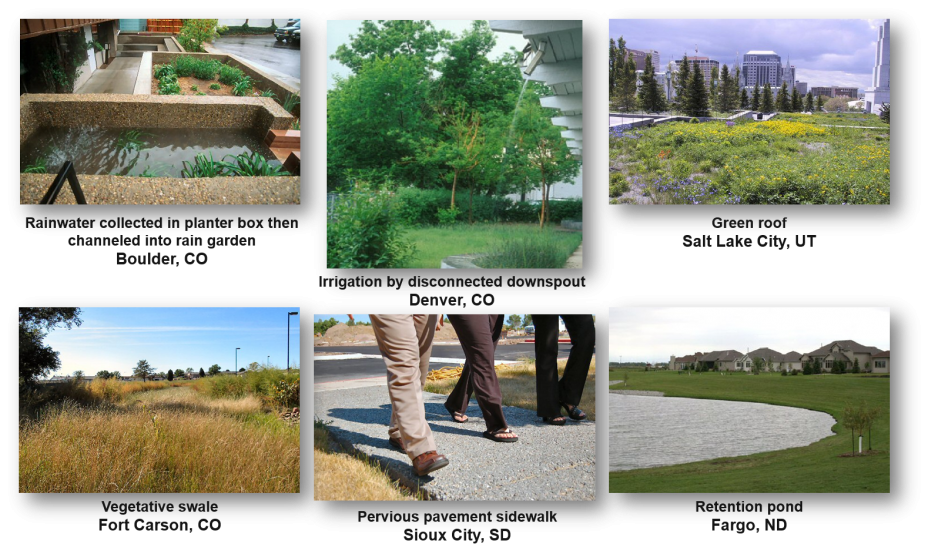Stormwater Management and Green Infrastructure Research
 Stormwater runoff is one of the fastest growing sources of pollution. When rain hits rooftops, parking lots and roads instead of wetlands, forests and grasslands, it tends to run into storm drains that are directly connected to our waterways. Wetlands and other natural resources can hold excess water in place, filtering out sediment and pollutants before they reach waterways while also helping to recharge groundwater.
Stormwater runoff is one of the fastest growing sources of pollution. When rain hits rooftops, parking lots and roads instead of wetlands, forests and grasslands, it tends to run into storm drains that are directly connected to our waterways. Wetlands and other natural resources can hold excess water in place, filtering out sediment and pollutants before they reach waterways while also helping to recharge groundwater.
Green infrastructure practices mimic natural habitats and absorb excess water. This reduces the amount of pollution in our waterways. They can also help conserve water while preserving water quality. Green infrastructure practices include permeable pavements, rain gardens, bioretention cells (or bioswales), vegetative swales, infiltration trenches, green roofs, planter boxes, rainwater harvesting (rain barrels or cisterns), rooftop (downspout) disconnection, and urban tree canopies.
Research and Technical Assistance
- Green Infrastructure Research at EPA Brochure
- Urban soils, ecosystem services, and the application of green infrastructure practices
- Assessments of green infrastructure impacts on watersheds
- Best practices for design, operation and maintenance of green infrastructure
- Decision support guidance for sustainable communities
- Promoting sustainability through Net Zero strategies
- Technical assistance with green infrastructure
Models and Tools
Related Resources
Basics, Planning, and Partnerships
Sustainable Communities
- Healthy Benefits of Green Infrastructure in Communities Fact Sheet
- Lick Run: Green Infrastructure in Cincinnati and Beyond
- Using Economic Incentives to Manage Stormwater Runoff in the Shepherd Creek Watershed, Part I
- Urban Street Trees and Green Infrastructure
- Community Solutions for Voluntary Long-Term Stormwater Planning
